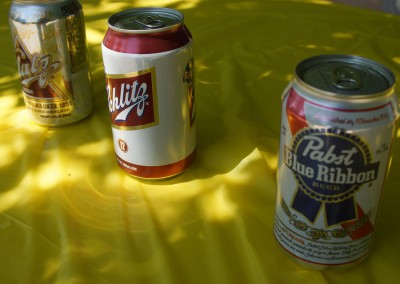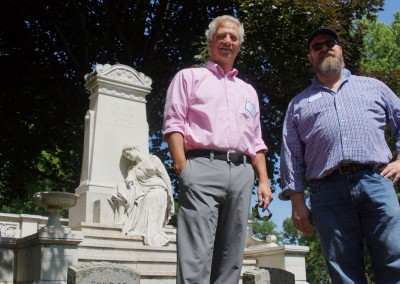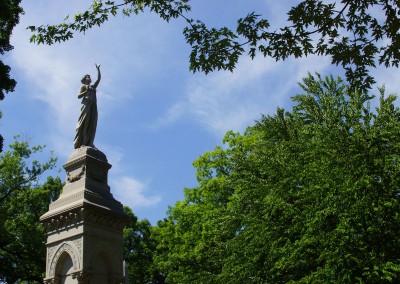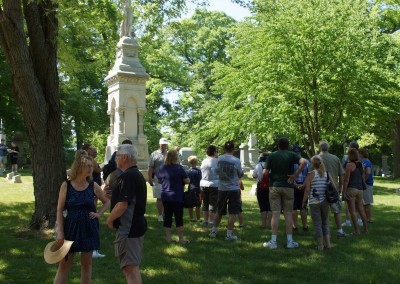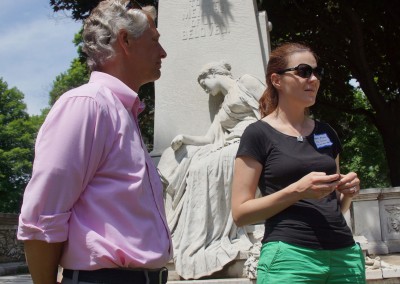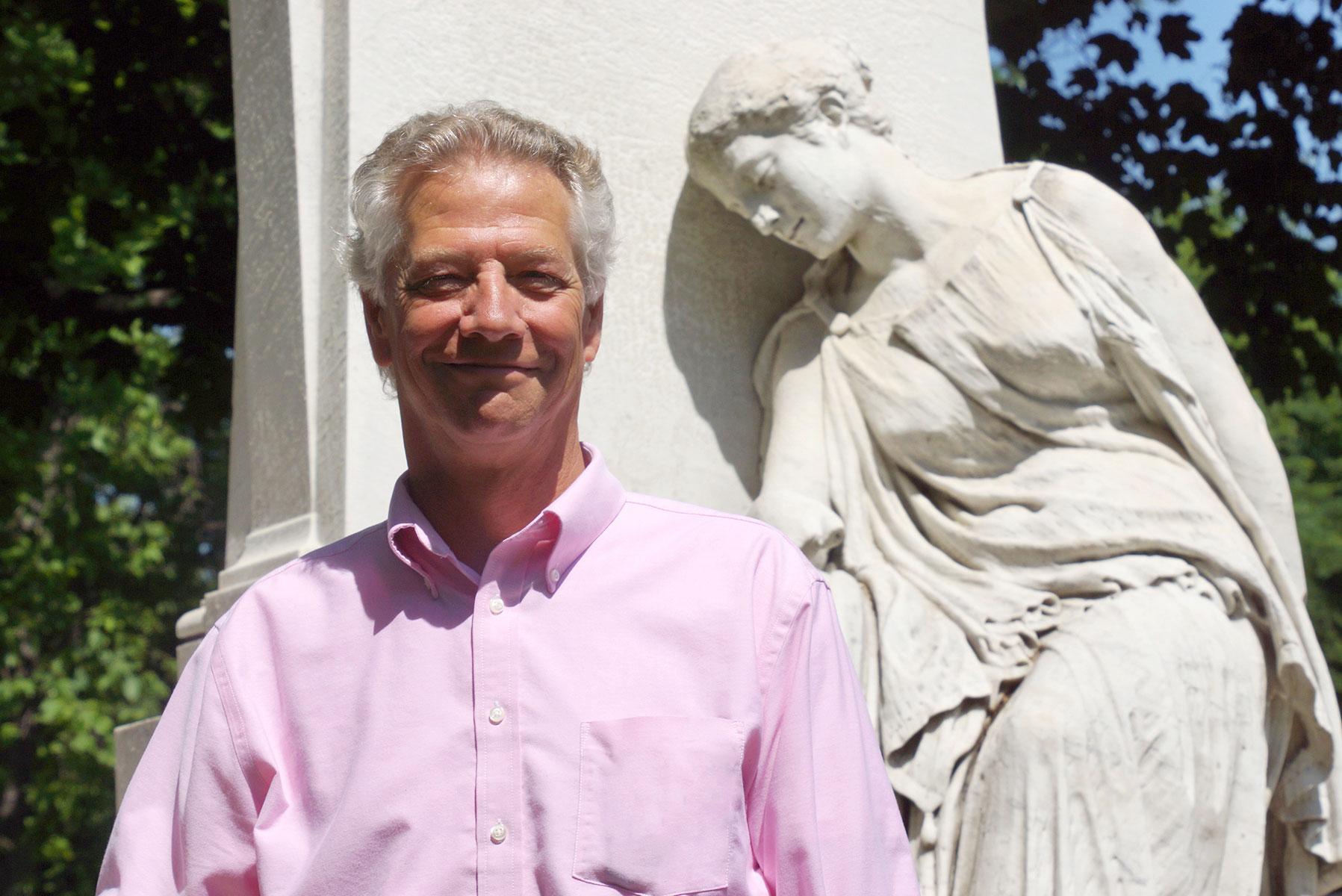
Highlights from “Brunch with the Barons,” when Forest Home Cemetery, the Pabst Mansion, and the Milwaukee County Historical Society jointly hosted a collaborative fundraiser on June 18.
More than 450 visitors attended the event that took place at Milwaukee’s Garden Cemetery, established in 1850, which is the final resting places of the Blatz, Pabst, Schlitz, Melm, and Gettelman families. Together they are the German immigrants who built the city’s beer industry.
Family descendant James C. Pabst, great-great grandson of Captain Frederick Pabst, shared stories with visitors at his family plot. Pabst is Chairman and President of Pabst Farms Inc., and worked on the book Pabst Farms – The History of a Model Farm with John C. Eastberg. Eastberg is Executive Director of the Pabst Mansion. Built in 1892, The Captain Frederick Pabst Mansion is the only fully-restored beer baron’s home in America. The book showcases Wisconsin’s dairy history at its best and is illustrated with hundreds of photographs from the Pabst family’s private archives.
Fred Gettelman, son of Frederic Gettelman who was the last chairman of the A. Gettelman Brewing Company before it was sold to the Miller Brewing Company, offered visitors details about his family’s contribution to the beer industry.
The tribute to Milwaukee’s beer making founders came at the close of “Brew City MKE: Craft, Culture, Community” exhibition. Mame Croze McCully, Executive Director of the Milwaukee County Historical Society (MCHS), produced the comprehensive display that was open to the public for several months. It presented rare artifacts and a deep historical perspective about brewing in Milwaukee from 1840 to the present. Founded in 1935, MCHS was formed to preserve, collect, recognize, and make available materials related to Milwaukee County history.
About Pabst Farms
Although the Pabst name is world-famous for its ties to the brewing industry, Fred Pabst Jr. balanced his duty to the family brewery with his love of land and livestock. In 1906, he began purchasing large parcels of land near Oconomowoc, Wisconsin, to create one of the most important model farms in the United States. Employing the latest advances in American and European agricultural theory, he organized a sustainable farming operation that provided all that was necessary for his self-sufficient farm.
From the construction of new farm buildings to the selection of diverse livestock, Pabst carefully considered every detail of his landmark farming operation. Hackney and Percheron horses were the mainstay of Pabst Farms until the popularity of the automobile quickly made horse breeding for carriages and wagons a thing of the past. Undaunted, Pabst transformed his 1,400-acre farm operation to focus solely on the development and breeding of award-winning, high-production Holstein dairy cattle. This is the story of how one family made their mark on Wisconsin’s dairy industry, but also of the Pabst family’s life on the farm and their efforts to bring the Pabst Brewing Company through the dark days of Prohibition with the development of a revolutionary cheese product, Pabst-ett.


